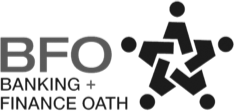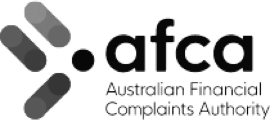At Banjo, we understand that having an accurate forecast of your enterprise’s future cash position by having a robust cash flow statement is essential for every business owner. It’s the only way of knowing whether incomings will be enough to meet outgoings. Here, we explore how to develop great cash flow forecasting disciplines, as well as common forecasting mistakes and how to avoid them.
As Banjo’s founder Andrew Colliver explains, the business monitors its cash flow position in real time, on a daily basis, constantly reviewing data such as the number of new clients the business has, repeat business and loan volumes.

A clear picture of growth drivers
“This helps us understand what’s driving our business model and contributing to loan volumes and margin,” he explains, adding that other key data points include the net cash flow position and cash on hand at the start and end of each month.
According to Colliver, the best businesses are always monitoring the actual versus budgeted cash position. But on a weekly basis, they are also monitoring cash on hand and payment obligations in the coming month.
In terms of the starting point when it comes to forecasting cash flow, Bradley Callaughan, founder of Callaughan Partners Financial, says forecasts must be driven by assumptions and you will need to arrive at these before you can start.
In the cloud
Banjo advises using a cloud-based accounting software package such as MYOB or Xero to record accurate financial data on which to base assumptions for cash flow statements and forecasts.
“For forecasts to be useful assumptions must be appropriate to the specific industry or business. The second year will be much easier as you will have past performance to rely on. In the first year you will have to turn to industry statistics, benchmarking, dealings with customers and suppliers and any knowledge that you may have on the industry,” Callaughan notes.
He says some of the main things to focus on will include:
- Sales growth estimates.
- Whether seasonality affects cash flow.
- Expenses.
- Timing of price increases by you and your suppliers.
- Inflation.
“Listing your assumptions within the forecast to show how you derived your figures will serve you well when assessing actual performance against the forecast,” advises Callaughan.
Forming assumptions
When it comes to collecting information, in your first year you will need to rely on realistic estimates based on industry benchmarks. In your second year the best place to start is to look at sales in previous years to identify trends.
“You can also look to identify external and internal items that may affect prices within the first year and adjust accordingly,” he adds.
When you have arrived at your forecast sales figure you will need to review how that money will be received.
“Assume 70 per cent of debts will be received within trading terms and 25 per cent will be received outside terms. The remaining four per cent will come thereafter and leave a one per cent provision for bad debts,” Callaughan notes.
Incomings and outgoings
To complete your cash flow forecast, you will need to prepare a list of other incomings and outgoings. Some examples of these include:
Incomings
- GST refunds and tax refunds.
- Government assistance from things like diesel fuel rebates and apprentice payments.
- Dividends received.
- Interest received.
- Insurance payouts.
Outgoings (direct and indirect)
- Expenses necessary to run the business.
- Cost of materials.
- Wages and salaries.
- Car loan repayments.
- Payments to suppliers.
- New equipment.
- Fees and charges.
- Superannuation payments.
- Insurances.
It’s important to be realistic to ensure your forecasting is as accurate as possible.
Don’t inflate income figures, but always over estimate the running costs and expenses.
“You can forecast for as long as you like but normally we look at a 12 month period. So when doing the next year we can use the last year to provide information to fill in the upcoming 12 months,” he notes.
Staffing the key
When it comes to the major challenges Banjo has faced and overcome in terms of its cash flow, Colliver says one of the main ones is deciding when to hire new staff.
“Eighty per cent of our expenditure is on staff and there’s always a temptation to hire more staff as the business becomes busier. But it’s important to review the 12-month run rate for the staff member on your books – rather than just taking a six-month view. The risk is that if you take a short-term approach, you could overrun your expense budget,” he explains.
The other challenge, says Colliver, is the timing of lumpy payments and cash receipts.
“You might be due to pay a large insurance premium, accounting bill or software licensing fee and it comes at an unexpected time. This can cause cash flow issues,” he notes.
To avoid this, talk to suppliers and clients about when large invoices are due, or when to expect payment for a large invoice, to give you better oversight of your future cash position.
Harnessing growth opportunities
His other advice is to ensure the enterprise has sufficient cash on hand so that if a business opportunity emerges, it can take advantage of it.
Above all, make sure cash flow forecasting becomes a regular business practice. Reviewing your cash flow statement weekly will allow you to make changes based on the information at hand, making your forecast more accurate. It will also ensure your profit and loss statement and balance sheet are as accurate as possible.
Finally, cash flow is often determined by the industry in which the business operates. For instance, in some sectors high volume, low margin trading is expected, whereas in other sectors high margin low volume trading is more the norm. It’s an idea to talk to the Australian Taxation Office or your accountant to ensure your approach


